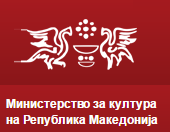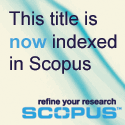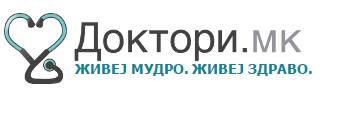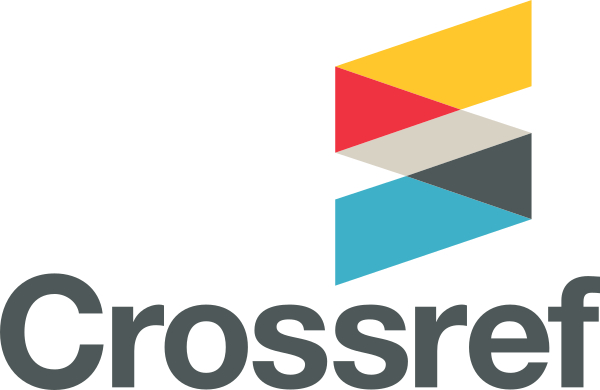JSER Policies
JSER Online
JSER Data
Frequency: quarterly
ISSN: 1409-6099 (Print)
ISSN: 1857-663X (Online)
Authors Info
- Read: 9719
M. ILIEVSKA,
M. SOTIROVSKA-SIRVINI,
Lj. NAUMOVSKA
ASPHYXIA, INTRACRANIAL HEMORRHAGES AND BRAIN EDEMA OF RISK CHILDREN IN THE ADVISORY INSTITUTE IN
3986 files have been examined in the Advisory Institute for a five year period in relation to the present risk factors in the pre, peri and postnatal period, the occurrence of asphyxia, I.H. (intracranial hemorrhages) and brain edema and their outcome for the children. There were 958 or 32% risk children, out of them 206 or 22% were with asphyxia, 25 or 3% were with brain edema and 14 or 1,5% were with intracranial hemorrhages.
The analysis for the risk factors shows that 119 of them were abortive , and from them 15% were born with asphyxia; 124 were SFD and 21% of them with asphyxia; 272 children weighed over 4500 gr., 7% of them with asphyxia and 0.4% with I.H., there were 68 twins, 12% of them with asphyxia. Out of the children with no risk registered, 6 were born with I.H., or 0,2%.
Mothers under the age of 18 gave birth to 13% children with asphyxia; treated for sterility and anemia during pregnancy 15%; with increased blood pressure 14%; and 5% with maintained pregnancy.
The highest delivery risk is present with children born with vacuum extraction (30% or every third child is with asphyxia and 3% with I.H.) and with children delivered by caesarean section (14% with asphyxia).
As for the position of the fetus-Citus pedalicus gave 55% children with asphyxia, and Situs pelvicus 12%.
The worst damage is suffered by infants with premature amnion disruption (62% are with asphyxia); with the umbilical cord round the neck-56% with asphyxia and 6% with I.H.; and with muddled amniotic fluid and placenta pelvia-50%.
The order of risk factors related to asphyxia, I.H. and brain edema is as follows: the first is premature amnion disruption, then follows the umbilical cord round the neck, the muddled amniotic fluid, and placenta previa and Citus pedalicus-which are obstetric problems. The next are the vacuum extraction and S.C. As for the gestatory period the order is as follows: first the abortive, then the twins and hypertrofic infants. The outcome of the early rehabilitation of these children in the first month of their lives at the Advisory Institute for Children's Development is the following: of those with I.H. 25% were with no sequela, 33% were with psychomotor retardation (RPM), 33% with cerebral palsy and 8% with hemiparesis.
Of the children with brain edema-50% were with no sequela, 50% with cerebral palsy, or generally, out of the children treated-33% or every third child is without sequela, 39% are with RPM, only 19% with cerebral palsy and 8% with hemiparesis.
Share Us
Journal metrics
-
 SNIP 0.059
SNIP 0.059 -
 IPP 0.07
IPP 0.07 -
 SJR 0.13
SJR 0.13 -
 h5-index 7
h5-index 7 -
 Google-based impact factor: 0.68
Google-based impact factor: 0.68
Related Articles
10 Most Read Articles
- PARENTAL ACCEPTANCE / REJECTION AND EMOTIONAL INTELLIGENCE AMONG ADOLESCENTS WITH AND WITHOUT DELINQUENT BEHAVIOR
- RELATIONSHIP BETWEEN LIFE BUILDING SKILLS AND SOCIAL ADJUSTMENT OF STUDENTS WITH HEARING IMPAIRMENT: IMPLICATIONS FOR COUNSELING
- EXPERIENCES FROM THE EDUCATIONAL SYSTEM – NARRATIVES OF PARENTS WITH CHILDREN WITH DISABILITIES IN CROATIA
- INOVATIONS IN THERAPY OF AUTISM
- AUTISM AND TUBEROUS SCLEROSIS
- THE DURATION AND PHASES OF QUALITATIVE RESEARCH
- REHABILITATION OF PERSONS WITH CEREBRAL PALSY
- DISORDERED ATTENTION AS NEUROPSYCHOLOGICAL COGNITIVE DISFUNCTION
- HYPERACTIVE CHILD`S DISTURBED ATTENTION AS THE MOST COMMON CAUSE FOR LIGHT FORMS OF MENTAL DEFICIENCY
- DIAGNOSTIC AND TREATMENT OPTIONS IN AUTISTIC SPECTRUM DISORDERS – AN OVERVIEW
















